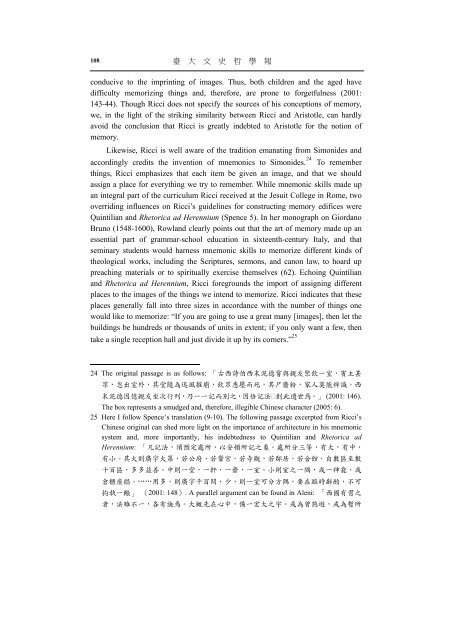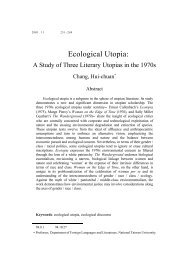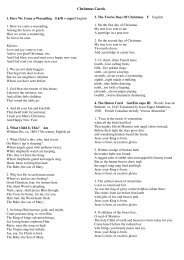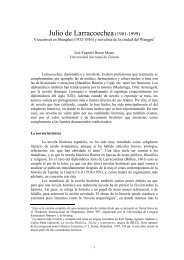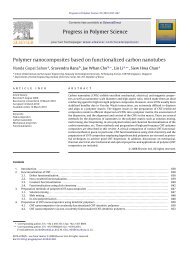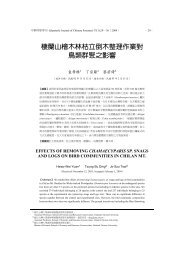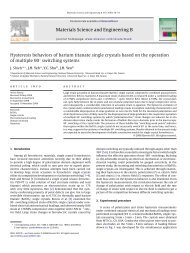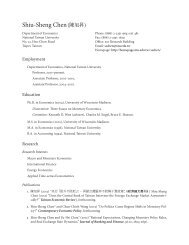Mnemonics and Bacon
Mnemonics and Bacon
Mnemonics and Bacon
Create successful ePaper yourself
Turn your PDF publications into a flip-book with our unique Google optimized e-Paper software.
108<br />
臺 大 文 史 哲 學 報<br />
conducive to the imprinting of images. Thus, both children <strong>and</strong> the aged have<br />
difficulty memorizing things <strong>and</strong>, therefore, are prone to forgetfulness (2001:<br />
143-44). Though Ricci does not specify the sources of his conceptions of memory,<br />
we, in the light of the striking similarity between Ricci <strong>and</strong> Aristotle, can hardly<br />
avoid the conclusion that Ricci is greatly indebted to Aristotle for the notion of<br />
memory.<br />
Likewise, Ricci is well aware of the tradition emanating from Simonides <strong>and</strong><br />
accordingly credits the invention of mnemonics to Simonides. 24 To remember<br />
things, Ricci emphasizes that each item be given an image, <strong>and</strong> that we should<br />
assign a place for everything we try to remember. While mnemonic skills made up<br />
an integral part of the curriculum Ricci received at the Jesuit College in Rome, two<br />
overriding influences on Ricci’s guidelines for constructing memory edifices were<br />
Quintilian <strong>and</strong> Rhetorica ad Herennium (Spence 5). In her monograph on Giordano<br />
Bruno (1548-1600), Rowl<strong>and</strong> clearly points out that the art of memory made up an<br />
essential part of grammar-school education in sixteenth-century Italy, <strong>and</strong> that<br />
seminary students would harness mnemonic skills to memorize different kinds of<br />
theological works, including the Scriptures, sermons, <strong>and</strong> canon law, to hoard up<br />
preaching materials or to spiritually exercise themselves (62). Echoing Quintilian<br />
<strong>and</strong> Rhetorica ad Herennium, Ricci foregrounds the import of assigning different<br />
places to the images of the things we intend to memorize. Ricci indicates that these<br />
places generally fall into three sizes in accordance with the number of things one<br />
would like to memorize: “If you are going to use a great many [images], then let the<br />
buildings be hundreds or thous<strong>and</strong>s of units in extent; if you only want a few, then<br />
take a single reception hall <strong>and</strong> just divide it up by its corners.” 25<br />
24 The original passage is as follows: 「古西詩伯西末泥德嘗與親友聚飲一室,賓主甚<br />
眾,忽出室外,其堂隨為迅風摧崩,飲眾悉壓而死,其尸齎粉,家人莫能辨識。西<br />
末泥德因憶親友坐次行列,乃一一記而別之,因悟記法 創此遺世焉。」 (2001: 146).<br />
The box represents a smudged <strong>and</strong>, therefore, illegible Chinese character (2005: 6).<br />
25 Here I follow Spence’s translation (9-10). The following passage excerpted from Ricci’s<br />
Chinese original can shed more light on the importance of architecture in his mnemonic<br />
system <strong>and</strong>, more importantly, his indebtedness to Quintilian <strong>and</strong> Rhetorica ad<br />
Herennium: 「凡記法,須預定處所,以安頓所記之象。處所分三等,有大,有中,<br />
有小。其大則廣宇大第,若公府,若黌宮,若寺觀,若邸居,若舍館,自數區至數<br />
十百區,多多益善。中則一堂,一軒,一齋,一室。小則室之一隅,或一神龕,或<br />
倉櫃座榻。……用多,則廣宇千百間,少,則一室可分方隅,要在臨時斟酌,不可<br />
拘執一轍」 (2001: 148). A parallel argument can be found in Aleni: 「西國有習之<br />
者,法雖不一,各有訣焉。大概先在心中,備一宏大之宇。或為曾熟遊,或為暫所


